Solar Impulse finds new nest at Payerne
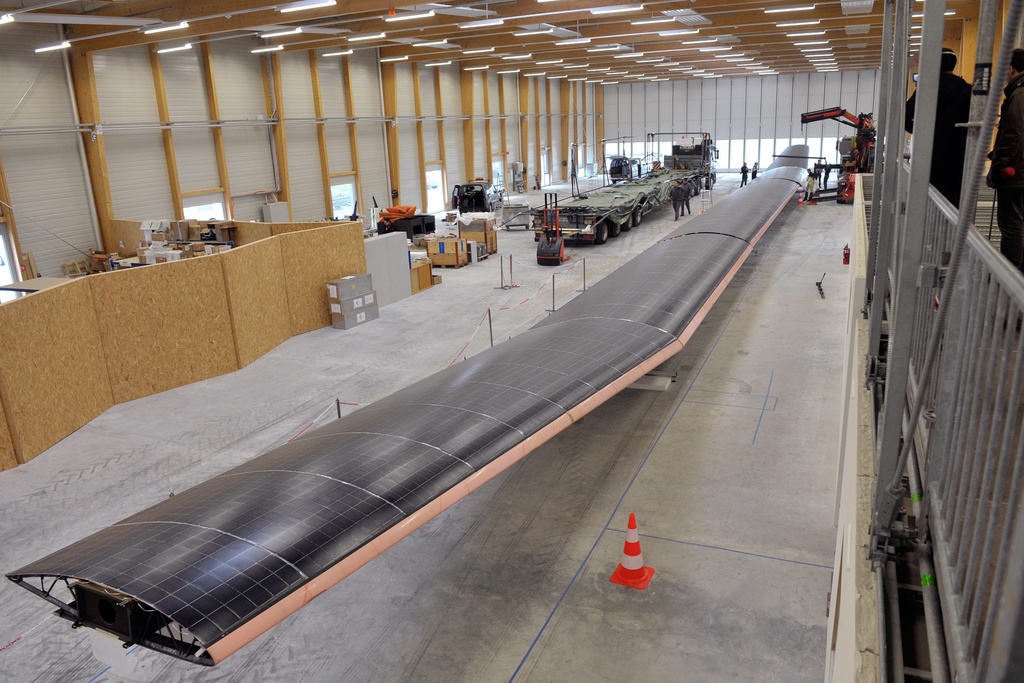
After a successful “flea hop” near Zurich, the Solar Impulse aircraft has moved home to Payerne in preparation for its first high-altitude and night flights.
On Tuesday the 64-metre wing was re-assembled after it had been safely transported in three sections from Dübendorf to Payerne airfields.
The first major test flight is due in mid-March with the long-term aim of flying around the world set for 2012.
“We were happy at Dübendorf [in canton Zurich], but Payerne is ideal for the continuation of the project,” André Borschberg, the CEO of the Solar Impulse project, told journalists in Payerne.
Borschberg will co-pilot the plane alongside Swiss adventurer Bertrand Piccard, who made the first non-stop hot air balloon flight around the world in 1999.
“There’s no heavy air traffic like at Kloten and the huge plain where the airfield is based is perfect for testing,” said the CEO.
Of the 70 team members involved in the SFr100-million Swiss solar adventure, a dozen will be based permanently at Payerne, north of Lausanne, to oversee the testing. These include the test-flight team, led by former Swiss astronaut Claude Nicollier.
Development work on the carbon fibre prototype will continue in parallel at the Dübendorf site.
The solar plane has a huge wingspan, the equivalent of an A340 Airbus, but weighs only 1,600kg – less than the average car – and its four engines have the power of a small scooter.
Higher and further
“We are now more or less in the middle of the project in terms of development work,” said Borschberg. “We have a plane and it flew on a runway, but we still need to show that it can fly higher and longer distances and then develop a second higher performance aircraft to circumnavigate the globe.”
The team is aiming to have the prototype ready for its first 1.5-hour test flight at a height of 1,000 metres in mid-March.
“This will be a new stage after the first 50cm-high flight in mid-December at Dübendorf. It obviously wasn’t spectacular for the public but the tests proved that the plane could be controlled,” said Borschberg.
From April Piccard and Borschberg will take over the controls to carry out the first flights at 8,500 metres. Then in June or July they expect to make the first 36-hour, day-and-night flight.
Morning sunshine
For this the aircraft will climb to 8,500m during the day so that the solar panels can absorb energy to power the plane, and at the same time store energy in lithium polymer batteries to run the engines at night, when it drops to a height of 2,500m.
“It will be crucial to plan with the meteorologists to be in the sunshine in the morning,” said Borschberg.
From this spring onwards Solar Impulse engineers will start working on the design of a second version of the solar plane, which will incorporate modifications from the testing phase.
“It’s not possible to get the best possible solution first time round,” said Borschberg.
Globetrotters
The long-term aim is to fly the new aircraft around the world in 20-25 days in five stages, depending on the weather, travelling at an average speed of 70km/h.
“It won’t be possible without stages due to the long distances and need to find good weather,” said the CEO.
The planned stop-offs in Europe, China, the United States, Hawaii and the Gulf region, will be an opportunity to show off the plane and stimulate interest in renewable energies.
“What we want to do is to fly day and night to show that, with renewable energies, you have unlimited duration of flight, no restriction,” Piccard told AFP at the World Future Energy Summit in Abu Dhabi last month.
“We believe that if an airplane can fly round the world with no fuel, nobody can say after that it’s impossible to do it for cars, heating systems, for air-conditioning, for computers and so on.”
Before attempting the round-the-world flight, the pair will test the Solar Impulse on a trans-Atlantic flight reproducing Charles Lindbergh’s famous journey but without fuel [Lindbergh became the first man to fly solo non-stop across the Atlantic Ocean].
“When Lindbergh crossed the Atlantic on his own with a plane full of fuel [in 1927] people said it was hopeless as it couldn’t take any passengers,” said Borschberg. “But 25 years later they developed a solution to take 200 passengers across the Atlantic by plane.”
“We are in the same situation. We propose to make the first step.”
Simon Bradley in Payerne, swissinfo.ch
While Piccard and Borschberg’s flight would be a first, other groups have already attempted solar-powered flight.
Nasa achieved success in 1997 when its Pathfinder—a lightweight, unmanned, flying wing—built with the AeroVironment firm climbed to 21,793 metres under its own power.
In 2001 the remotely piloted Helios aircraft reached an altitude of 29,524 metres —an unofficial world-record altitude flight for a solar plane. During a 2003 flight, Helios crashed near Hawaii.
The first really notable solar aircraft was AeroVironment’s Solar Challenger, which crossed the English Channel in July 1981.
Seven years of work, calculations, simulations and tests were needed by the 70-person team to complete the aircraft.
It has the wingspan of a Boeing 747-400 and the weight of an average family car at 1,600kg.
It has 12,000 solar cells mounted onto the wing, which will supply energy to the four electric motors with a maximum power of 10 HP each.
During the day they will also charge the polymer lithium batteries (400kg), which will allow the aircraft to fly at night.
The first ever non-stop balloon flight around the world in 1999 brought Bertrand Piccard fame as the “scientist-adventurer.” In addition to his aeronautical activities, Piccard also trained as a psychiatrist.
His grandfather Auguste was the first person to explore the stratosphere and invented the bathyscaphe with which his father, Jacques dived to the deepest point in the oceans.
Jacques Piccard, credited as one of the 20th century’s last great adventurers, died at the age of 86 at his home on Lake Geneva last November.

In compliance with the JTI standards
More: SWI swissinfo.ch certified by the Journalism Trust Initiative

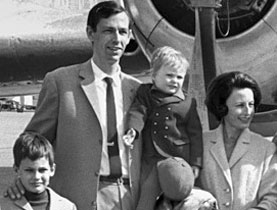
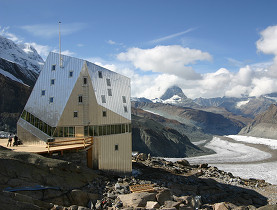
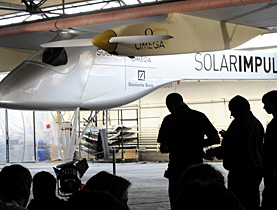
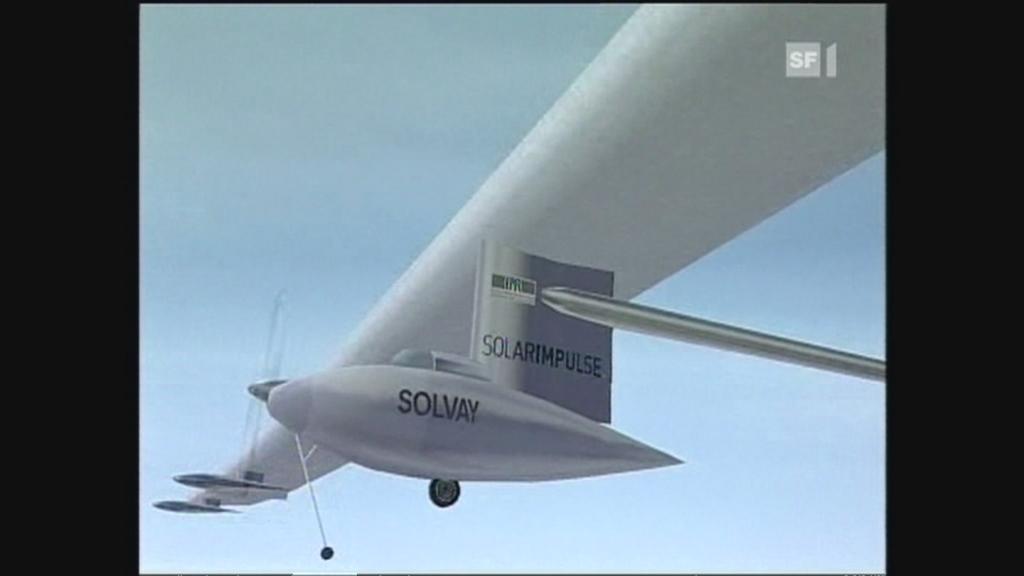
You can find an overview of ongoing debates with our journalists here. Please join us!
If you want to start a conversation about a topic raised in this article or want to report factual errors, email us at english@swissinfo.ch.